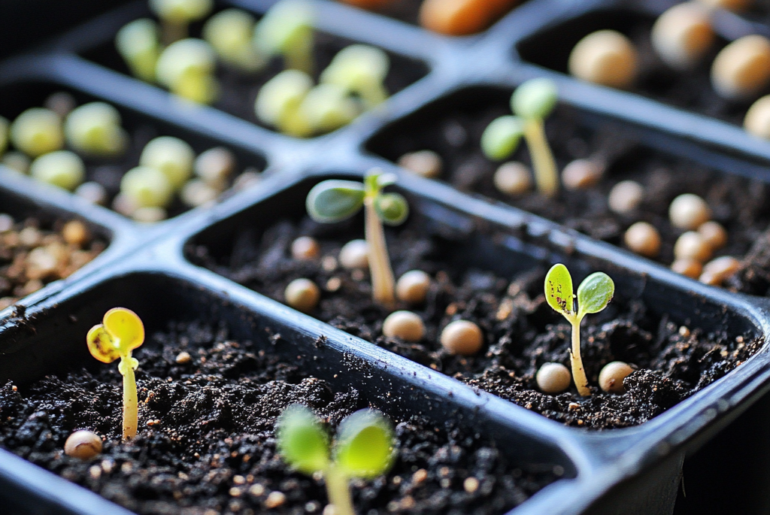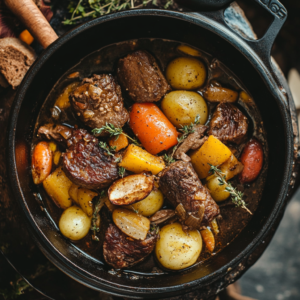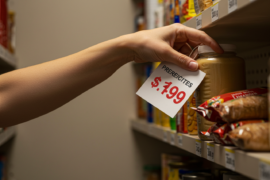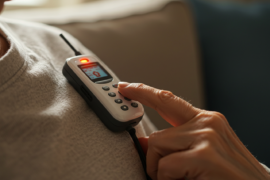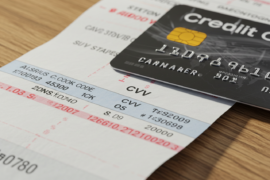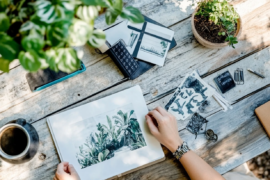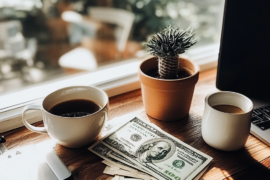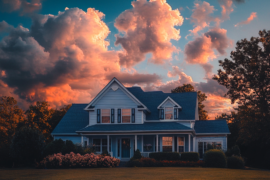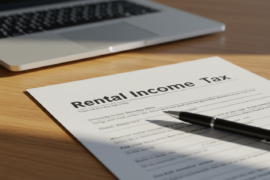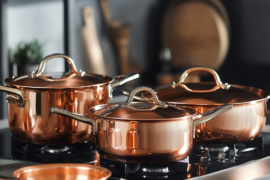This article may contain references to products or services from one or more of our advertisers or partners. We may receive compensation when you click on links to those products or services. Nonetheless, our opinions are our own.
Starting a garden from seeds is one of the most rewarding experiences for a beginner gardener. There’s something genuinely magical about nurturing tiny seeds into flourishing plants, but the journey has challenges. As you dive into the world of seed starting, you may encounter some common pitfalls that can hinder your success.
We’ll explore five prevalent missteps that new gardeners often make when growing seeds—and more importantly, we’ll provide practical solutions to help you overcome these obstacles. Whether aiming to cultivate vibrant flowers or delicious vegetables, understanding these potential mistakes will lead you to a thriving garden.
- Understanding the Importance of Quality Seeds for Successful Growth
- Choosing the Right Soil Mix for Optimal Seed Development
- Mastering the Art of Watering: How Much Is Too Much?
- Providing Adequate Light: The Key to Healthy Seedlings
- Recognizing and Managing Common Pests and Diseases
- Transplanting with Care: Ensuring Your Seedlings Thrive Outdoors
-
Frequently Asked Questions
- What is one of the most common mistakes beginners make with seed starting?
- How can overwatering affect seed germination?
- Why is light critically important for seedlings, and how do beginners frequently get this wrong?
- What impact does temperature have on seed growth?
- How does crowding affect young plants?
- Final Thoughts
- Recommended Reads
Understanding the Importance of Quality Seeds for Successful Growth
Choosing the right seeds is a crucial step that sets the foundation for your gardening journey. Quality seeds ensure vigorous, healthy plants that are more likely to thrive in your growing conditions. When you start with inferior seeds, you face several challenges, including poor germination rates and weak plants, which ultimately result in a disappointing harvest.
It’s vital to source seeds from reputable suppliers who prioritize genetic diversity and local adaptability. This can distinguish between a thriving garden and one that struggles to establish itself.
To help you make informed decisions, consider the following tips for selecting quality seeds:
-
Look for Certified Seeds: Opt for seeds certified for quality by agricultural authorities.
-
Check Seed Viability: Pay attention to expiration dates on seed packets to ensure optimal germination rates.
-
Research Varieties: Some varieties are bred specifically for your local climate and conditions—choose accordingly.
-
Assess Packaging: Quality seeds often come in protective packaging to preserve freshness and moisture content.
| Seed Quality Indicators | What to Look For |
|---|---|
| Germination Rate | Above 85% is optimal |
| Appearance | Healthy, plump seeds without blemishes |
| Source | Reputable seed companies or nurseries |
By ensuring you start with quality seeds, you pave the way for a flourishing garden and avoid common pitfalls many beginners face. Don’t underestimate the importance of good seeds—they are the heart of your gardening success.
Choosing the Right Soil Mix for Optimal Seed Development
Choosing the right soil mix for seed starting can distinguish between a thriving garden and a disappointing harvest. It is essential to choose a mix that promotes optimal drainage, aeration, and nutrient availability.
Avoid using regular garden soil, as it can be too dense and may harbor pests or diseases. Instead, look for seed-starting mixes specifically formulated to create the perfect environment for young plants. These mixes often contain components like vermiculite, perlite, and peat moss, which help maintain moisture without becoming waterlogged.
To help in your selection process, consider these key components:
-
Lightweight Texture: A mix that allows for easy root penetration.
-
Moisture Retention: Ensure the mix can hold enough water to nourish seeds.
-
Nutrient-Rich: Look for mixes with added nutrients tailored for seedlings.
| Ingredient | Benefits |
|---|---|
| Peat Moss | Excellent moisture retention and aeration |
| Perlite | Improves drainage and prevents soil compaction |
| Vermiculite | Enhances moisture retention and aeration |
| Compost | Provides essential nutrients for seedling growth |
By investing time in choosing the right soil mix, you’ll set a solid foundation for your seeds, ensuring they have the best chance to thrive. Think of it as giving your plants a cozy, nourishing home from day one.
Mastering the Art of Watering: How Much Is Too Much?
Finding the right balance in watering is crucial when nurturing your seeds. Overwatering can lead to root rot, mold, and other problems derailing your gardening efforts.
Pay attention to the type of seeds you’re growing, as different plants have varying water needs. While some seeds thrive in consistently moist soil, others prefer the soil to dry out slightly between waterings.
Signs of Overwatering:
-
Wilting Leaves: While it may seem counterintuitive, overwatered plants can wilt due to a lack of oxygen in the roots.
-
Yellowing Leaves: If you notice the edges or tips of leaves turning yellow, it could be a sign of excess moisture.
-
Mold or Fungus: Gray or black mold on the surface of the soil clearly indicates too much water.
To avoid these issues, implement a watering schedule that allows the top inch of soil to dry out between sessions. A simple rule of thumb is to use a moisture meter or stick your finger into the soil—if it feels damp, hold off on watering.
Providing Adequate Light: The Key to Healthy Seedlings
When it comes to nurturing healthy seedlings, the importance of light cannot be overstated. Whether you’re using natural sunlight or artificial grow lights, your seedlings need the right intensity and duration of light to thrive.
A common mistake is assuming that placing your seedlings by a window provides enough energy. While sunlight is beneficial, not all windows offer consistent exposure, which can lead to weak, leggy plants in search of more light.
Light Tips for Success:
-
Duration: Seedlings typically require 12–16 hours of light each day.
-
Distance: If using grow lights, place them 2–4 inches above seedlings to avoid burning.
-
Type of Light: Use full-spectrum grow lights to mimic the sun’s natural rays, promoting vigorous growth.
| Seedling Type | Light Duration (Hours) | Recommended Distance from Light (Inches) |
|---|---|---|
| Tomatoes | 14–16 | 2–4 |
| Peppers | 12–14 | 4–6 |
| Lettuce | 12–14 | 6–12 |
Monitor the health of your plants regularly and adjust the light conditions accordingly. With the right lighting setup, you’ll be on your way to creating a thriving garden.
Recognizing and Managing Common Pests and Diseases
One of the most daunting challenges you’ll face is dealing with pests and diseases. It can be disheartening to see your hard work threatened by uninvited guests. Staying vigilant and taking action at the first sign of trouble is key.
Common Problems to Watch For:
-
Aphids: Tiny sap-sucking insects. Look for curling leaves or sticky residue.
-
Mildew: A white, powdery substance on leaves—usually a fungal issue. Increase airflow to combat it.
-
Blight: Causes dark spots and wilting. Remove affected plants immediately to prevent spread.
-
Spider Mites: Can cause yellowing leaves. A firm spray of water or neem oil can help dislodge them.
| Pest/Disease | Management Strategy |
|---|---|
| Aphids | Introduce ladybugs or use insecticidal soap |
| Mildew | Apply fungicides and ensure proper plant spacing |
| Blight | Rotate crops annually and practice good sanitation |
| Spider Mites | Use neem oil or insecticidal soap to control them |
By staying alert and adopting preventative measures, you can reduce the impact of these common issues and keep your seedlings on track to become healthy plants.
Transplanting with Care: Ensuring Your Seedlings Thrive Outdoors
Transplanting your seedlings to the great outdoors can be straightforward but requires care to ensure success. Begin by familiarizing yourself with the hardening-off process. This involves gradually acclimating your plants to outdoor conditions.
Start by placing your seedlings outside for a few hours daily, increasing the duration over a week or two. This reduces the shock of temperature changes and sun exposure.
Additional Tips:
-
Check Soil Conditions: Ensure the soil is well-draining and nutrient-rich.
-
Prepare Planting Holes: Ensure holes are large enough for the root ball to expand comfortably.
-
Water Thoroughly: Water seedlings generously before and after transplanting to support root establishment.
| Care Tip | Benefit |
|---|---|
| Hardening Off | Prepares plants for outdoor conditions |
| Choosing the Right Day | Minimizes transplant shock |
| Soil Preparation | Provides essential nutrients for growth |
Taking your time during this critical step can yield rewarding results and help your garden flourish.
Frequently Asked Questions
What is one of the most common mistakes beginners make with seed starting?
One major mistake is not using the right soil mix. Many beginners use garden soil, which can be too heavy and may contain pests or diseases. A seed-starting blend that’s light and formulated explicitly for seedlings will promote healthy root development.
How can overwatering affect seed germination?
Overwatering can lead to root rot and prevent seeds from sprouting. If oversaturated, seeds can drown. Water lightly and consistently, ensuring the soil stays moist but never soggy. Always check soil moisture before watering again.
Why is light critically important for seedlings, and how do beginners frequently get this wrong?
Light powers photosynthesis, which is vital for healthy growth. Many beginners underestimate how much light seedlings need and place them in dim areas. Ensure seedlings receive 12–16 hours of light daily, preferably using grow lights for consistency.
What impact does temperature have on seed growth?
Temperature plays a significant role in germination and early growth. Germination may fail if the environment is too cold or fluctuates too much. Most seeds do best between 65°F and 75°F. Use heat mats if necessary to maintain warmth.
How does crowding affect young plants?
Crowding leads to poor air circulation and competition for resources. Plants that are too close may struggle to thrive. Follow spacing recommendations on seed packets and thin seedlings when necessary to give each plant adequate room.
Final Thoughts
Avoiding these common seed-starting mistakes gives you a significant head start as a new gardener. With the right soil, light, watering, and timing, you’ll set your garden up for a vibrant, healthy season.

Reviewed and edited by Albert Fang.
See a typo or want to suggest an edit/revision to the content? Use the comment form below for feedback.
At FangWallet, we value editorial integrity and open collaboration in curating quality content for readers to enjoy. Much appreciated for the assist.
Did you like our article and find it insightful? We encourage sharing the article link with family and friends to benefit as well - better yet, sharing on social media. Thank you for the support!
Article Title: 5 Common Seed Mistakes New Gardeners Make
https://fangwallet.com/2025/03/29/5-common-seed-mistakes-new-gardeners-make/The FangWallet Promise
FangWallet is an editorially independent resource - founded on breaking down challenging financial concepts for anyone to understand since 2014. While we adhere to editorial integrity, note that this post may contain references to products from our partners.
The FangWallet promise is always to have your best interest in mind and be transparent and honest about the financial picture.
Become an Insider
Editorial Disclaimer: The editorial content on this page is not provided by any of the companies mentioned. The opinions expressed here are the author's alone.
The content of this website is for informational purposes only and does not represent investment advice, or an offer or solicitation to buy or sell any security, investment, or product. Investors are encouraged to do their own due diligence, and, if necessary, consult professional advising before making any investment decisions. Investing involves a high degree of risk, and financial losses may occur including the potential loss of principal.
Source Citation References:
+ Inspo
Investopedia. (n.d.). Investopedia. https://www.investopedia.com/
Wikipedia, the free encyclopedia. (n.d.). https://www.wikipedia.org/
Fang, A. (n.d.). FangWallet — Personal Finance Blog on Passive Income Ideas. FangWallet. https://fangwallet.com/
Google Scholar. (n.d.). Google Scholar. https://scholar.google.com/
There are no additional citations or references to note for this article at this time.
